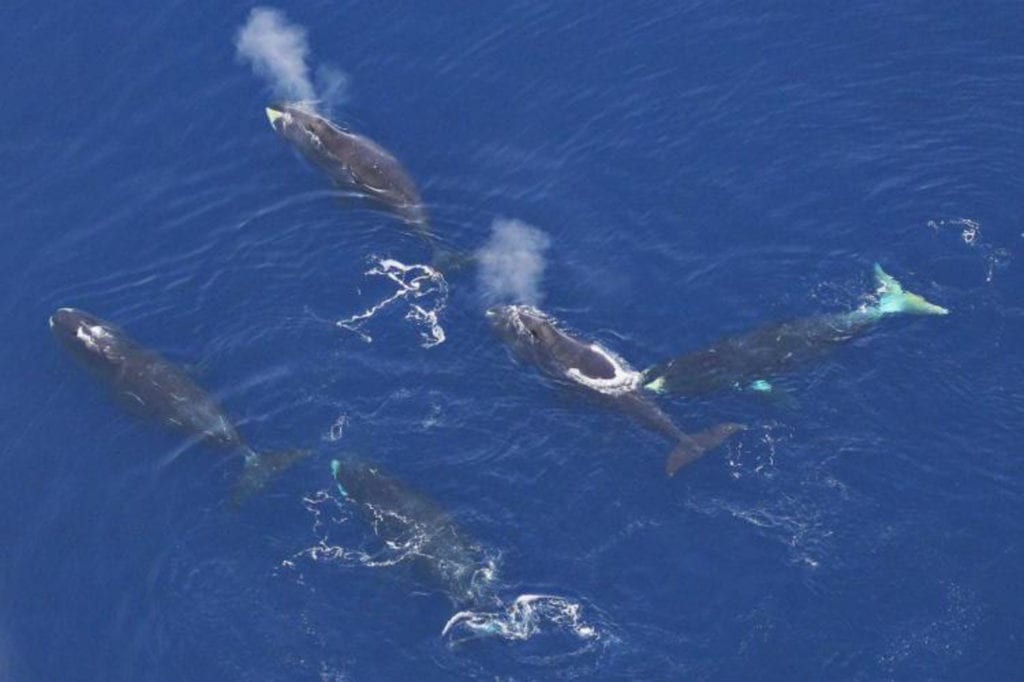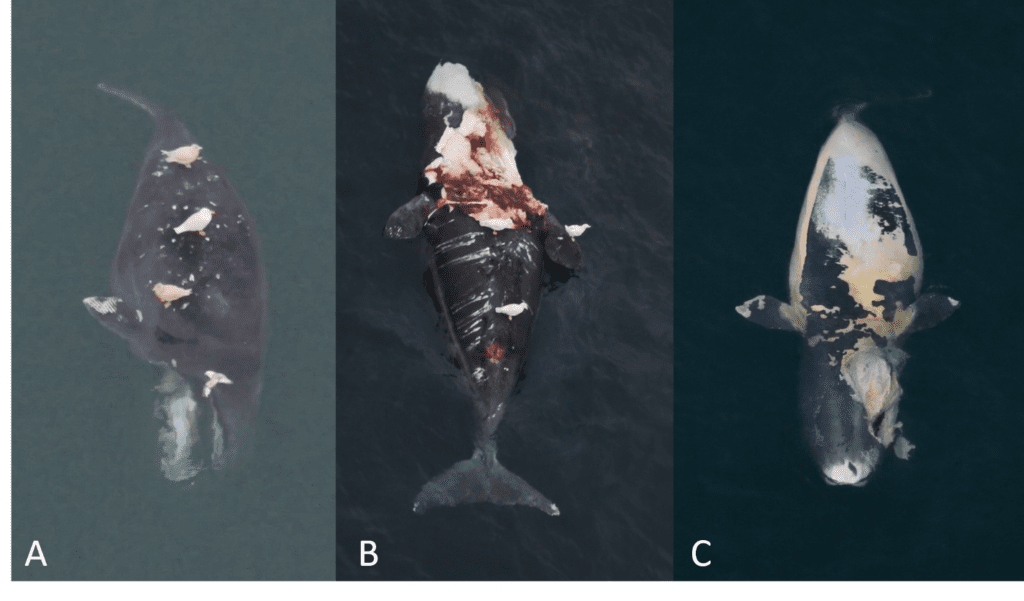
Federal fisheries scientists say they now have direct evidence for the first time that killer whales are preying on bowhead whales in the northeastern Chukchi Sea and western Beaufort Sea.
According to NOAA Fisheries scientists the dramatic loss of sea ice in recent years may be the reason bowheads are now more vulnerable to killer whale predation.
The new study released this week of the non-harvest mortality of bowhead whales in the U.S Pacific Arctic is part of a multi-year collaborative research effort.
“Until now bowhead whales in the U.S. Pacific Arctic were thought to experience minimal predation pressure from killer whales,” said Amy Willoughby, the NOAA Fisheries Affiiate/University of Washington scientist who led the study. “We now know that during 2009-2018 killer whale predation was the primary cause of death observed for bowhead whales in the region.”
Bowhead whales are considered a vital nutritional, spiritual and cultural resource by 11 Alaska Native whaling communities who hunt the bowheads for subsistence during the spring and fall migrations of the bowheads. Prior to its halt in the early 1900s, commercial whaling brought bowheads to near extinction. Although they are still endangered, the western Arctic bowhead population has recovered sufficiently to support subsistence harvests under co-management of NOAA Fisheries and Alaska Native organizations.
Bowheads live almost exclusively in seasonally ice-covered waters, with their thick blubber insulating them from freezing temperatures and their massive skulls serving as icebreakers. Whaling crews of Alaska Natives have told of bowheads surfacing through two feet of solid ice.
NOAA scientists said understanding how rapid warming and loss of sea ice in the Arctic has transformed the Pacific Arctic ecosystem is information vital to Alaska Native subsistence communities adapting to change.
Once the bowheads get into the ice, they are safe from killer whales, because Arctic killer whales don’t like sea ice, said bowhead expert Craig George, a retired senior biologist with the North Slope Borough Department of Wildlife Management at Utqiagvik. With the reduction of summer and fall sea ice the bowheads no longer can escape into thick ice, he said.

During a 2009 aerial survey of Arctic marine mammals funded by the federal Bureau of Ocean Energy Management and implemented by NOAA Fisheries, photo-documenting of whale carcasses began. Images of the carcasses of bowhead whale remains were sent to the North Slope Borough to determine cause of death.
Wildlife veterinarian Raphaela Stimmelmayr, at the North Slope Borough Department of Wildlife Management, said that the killer whales are remarkable hunters of diverse marine prey. Much of what scientist have learned about killer whale hunting techniques on baleen whales and resulting body injuries has come from eyewitness accounts of killer whale attacks from indigenous hunters, biologists and commercial whales.
In 2015 researchers analyzed a photo of a bowhead calf carcass that showed killer whale rake marks on its flipper and injuries to its jaw and mouth.
This appeared to be the first documented case of killer whale predation on a bowhead whale in the eastern Chukchi and western Beaufort seas, according to Willoughby.
“In the years that followed, we saw more bowhead whale with injuries consistent with killer whale predation,” she said. “That made us wonder if there were earlier accounts of predation that had not een noted.”
When scientist then reviewed all of their bowhead whale carcass images from 2009 through 2018 they found that a bowhead whale in 2010 also had injuries consistent with killer whale predation. At length 18 of 33 bowhead carcasses documented from 2009 through 2018 were classified as having significant injuries caused by killer whales.
Predation on bowhead whales in Russia and other locations along their migratory route had been previously documented, NOAA scientists said.
“We have been monitoring scars on harvested bowheads for 35 years,” George said. “We noted scars from killer whale attacks, line entanglement and ship strikes. We knew bowhead were attacked by killer whales. Native hunters of St. Lawrence Island had reported bowhead carcasses likely killed by killer whales, but we had no evidence of successful predation within the eastern Chukchi and western Beaufort seas.
“We now have direct evidence of killer whales taking bowheads in U.S. Arctic waters over the last 10 years.”





